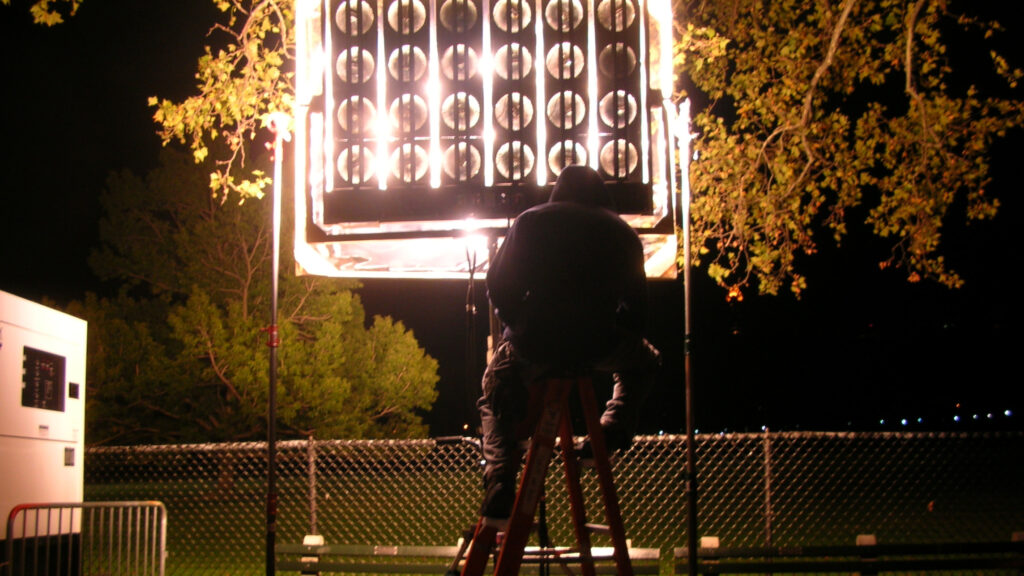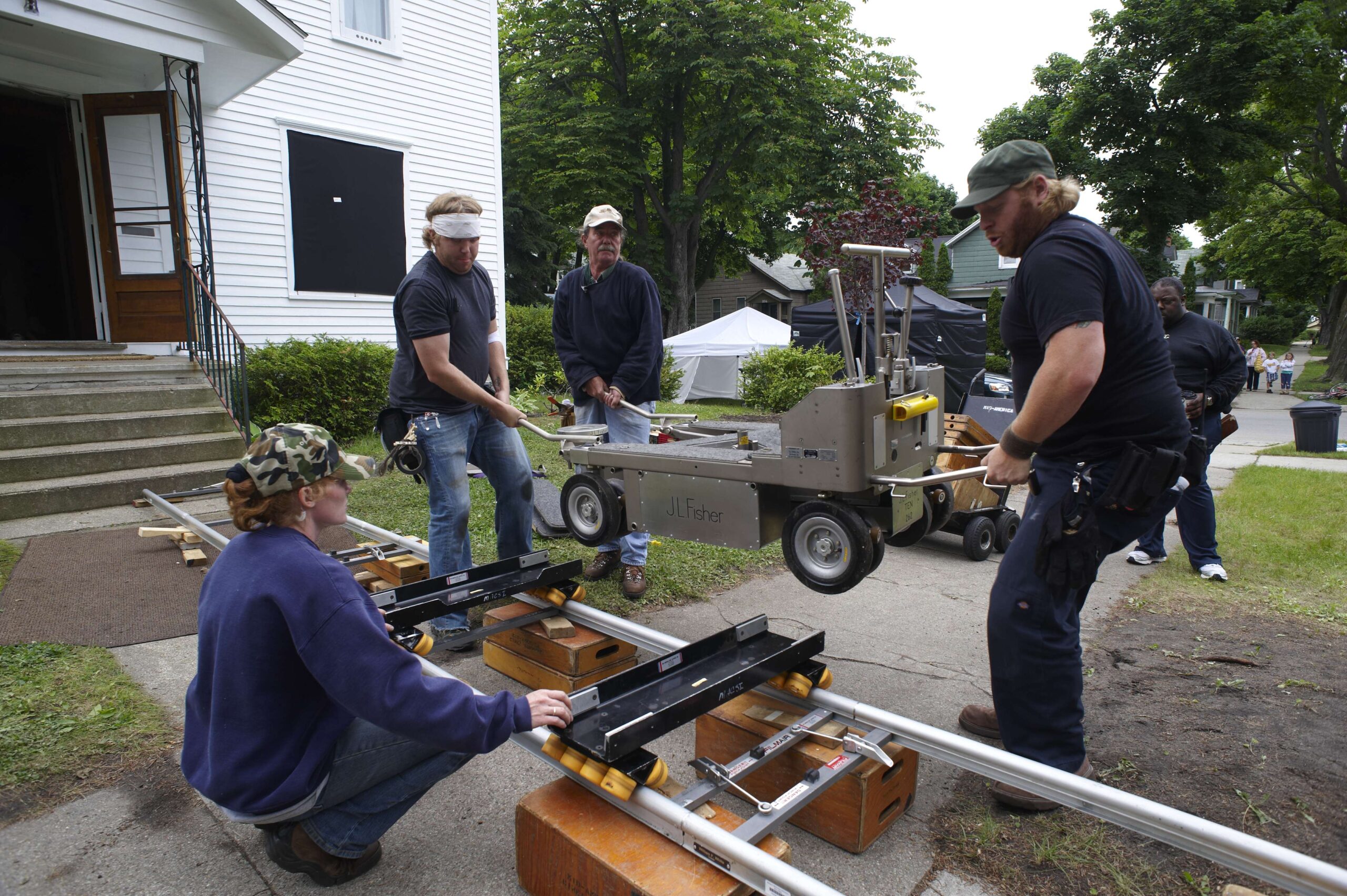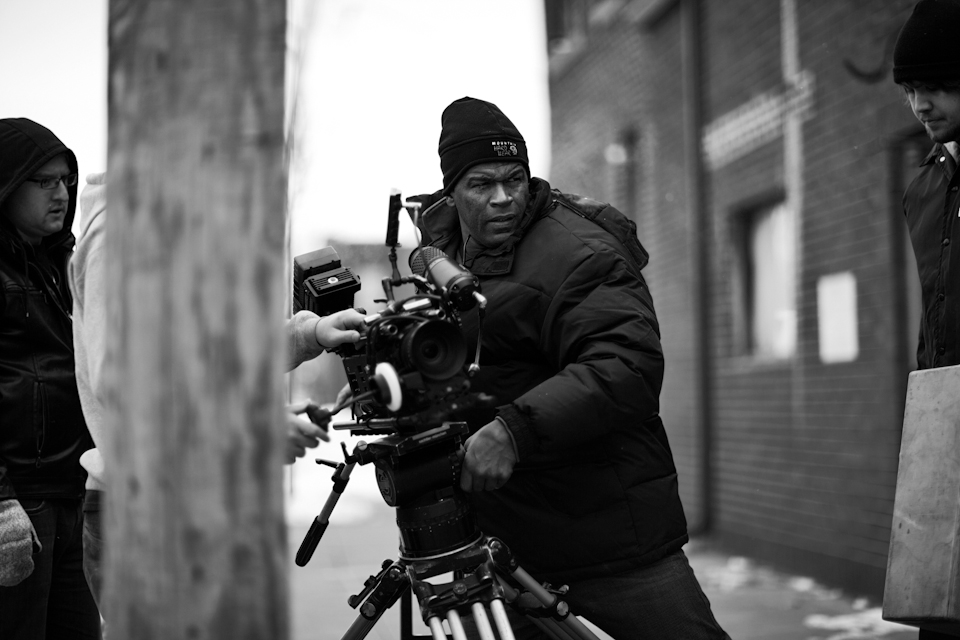A lot of film students learn the hard way that more often or not you don’t just become a professional director—like most careers, you have to work your way up the ladder. What many might not realize is that it’s almost just as hard to reach the ladder’s second highest rung—the Director of Photography. There are a few different routes one can take (unless it’s a really cheap shoot and you can win the position just by owning your camera) but most of these paths have several difficult steps before they take you to the top cinematographic spot.
Like most paths to any position in filmmaking, the lowest spot on the totem pole is the production assistant. On-set PAs will work for any and all departments, including those overseen by the Director of Photography—the camera, lighting & electric, and the grip departments. Much of a PA’s time will be spent getting everyone else their coffee. It might not feel anything like what you had in mind when you decided you wanted to make movies, but a PA is as much a part of the team as anyone else, and while their work may go unnoticed, it does not go unappreciated. By working hard, being friendly and likeable, and networking with those around them, PAs can find work on subsequent shoots, and eventually a promotion.
The Camera Department
It goes without saying that many DPs come from the camera department. As with all the departments on set, the specific responsibilities of each position depend entirely on the size and nature of the shoot. Generally speaking, though, there are three primary positions in the camera department: the camera operator, the first assistant camera, and the second assistant camera.
The camera operator is the individual physically working behind the camera, their eye in the viewfinder. While some DPs prefer to work the camera themselves, it is usually to their advantage that someone trusted does it for them while they watch the shot from a monitor or with her or his own naked eye, getting a better sense of the shot. Since the camera operator is one of the few positions a DP may want for his or herself, it goes without saying that many have made a direct jump from here to cinematographer.
The first assistant camera, sometimes called the focus puller, is responsible for several tasks besides its namesake. 1st ACs keep the camera department’s equipment clean, which involves “checking the gate,” the tedious but all-important process of removing a lens and cleaning the inner workings of the camera of any hair or dust or broken pieces of film. Even on digital shoots, 1st ACs must make sure the CCD is operating at full capacity in order to produce the best possible shot. Focus pulling is a skill that can require years if not decades of practice. An out-of-focus shot is a blemish on the record of any camera department and therefore one of the most important jobs on set. An expert 1st AC is a gift for any film set, and carries a reputation that could easily earn them the DP spot on their next project.
The second assistant camera, occasionally called the clapper loader, is typically in charge of loading the film and keeping track of all camera reports and paperwork. Keeping with this, the 2nd AC also slates each take. They also make marks for actors and measure distance for the focus puller.
There is not as much hierarchy within a given department as one might think. For the most part, most positions are at an equal standing, all reporting either to the head of the department or the Director of Photography directly. (On a strictly professional set, nobody should ever communicate with the director, everyone must interact up the food chain through the appropriate channels.) Even a position such as first assistant technically has no authority over the second assistant—they just have different, equally important duties.
It take years to become skilled at any one position. Many people have made very successful careers out of exclusively being a 1st AC, camera operator, etc. For those with an ambition and calling for the DP spot, though, the camera department is a great place to climb the ladder.
The Lighting & Electric Department

A strong DP will usually choose the look he wants after discussing it with the director in private. He will relay this to his crew, who, if they are dedicated and competent can then find that look without any further input from the DP. This may seem counterintuitive, but the DP is after all the Director of Photography, and his job is to direct the crew, not micromanage them. An efficient camera operator will know what lenses to use to achieve the DPs frame. And a good lighting department will know what type of lights and where to place them without having to ask the DP, who should be more focused on the bigger, creative picture.
That makes the head of the lighting department, the gaffer, a very important position for shooting a film. A gaffer and his crew may also be called electricians, but this is mostly nominal because of the voltage and amperage the team must work with in order to maintain the power-hungry film lights. While the job is very technical, the gaffer must have an artistic bent as well, a way with lighting that may take years to develop in order to achieve a certain look with the tools at hand. This makes the gaffer a close ally of the DP, and a logical preceding step to the position.
The lighting department is more hierarchical than the camera department, with assistant gaffers reporting directly to the department head. However, another important position is the best boy electric, the gaffer’s direct assistant, a foreman for the entire department. The best boy manages the crew itself and their workplace, paperwork, loading and unloading and maintaining equipment, and coordinates with the other departments. On location scouts and other second unit work, the best boy can even fill in for the gaffer. While it’s rare for best boys to make the immediate jump to DP, they are a hair’s breadth from the gaffer position and therefore one more step closer to being Director of Photography.
The Grip Department

The grip department is similarly structured to lighting & electric. It is headed by the Key Grip, who helps achieve the director and DP’s vision by utilizing the appropriate equipment needed. The grip department is in charge of all non-lighting and non-camera equipment, like flags and C-stands and bounce boards. This equipment not only shapes the light for a scene but also helps the camera achieve its intended frames. As a department head that directly works with the cinematographer, the Key Grip is another direction from which someone could make the jump to DP.
The larger a shoot, the more grips it will employ, grips who could work their way up to the best boy grip, a position very similar to its lighting & electric equivalent. The grip department also includes positions that work closely with the camera department, such as the dolly grip and crane operator. These positions, while lower on the totem pole than others, work closely with the camera and therefore come into contact with the DP more than other lower-level grips. It may be difficult to jump right to the top from these positions, but they are a step or two closer than other grips and another option to consider when plotting a course to the top.
Networking
No matter where you’re coming from or where you’re looking to advance, networking is very important. Once you head a department or work closely with the DP in another capacity, you must build and maintain that relationship. Someone who has made the journey before you has the best perspective for you to learn from. This presents a tricky balance as the DP is your ally but also your future competition in an industry with far less high-quality shoots than high-quality craftsmen and artists. You will compete directly with your former boss for jobs, and every DP who makes a recommendation knows this. It is only through a good working relationship and hard-earned respect that a DP will recommend you to producers and directors for one of their projects.
Or you could go to those directors and producers yourself, networking and building relationships with those you come into contact with through your current and previous positions. The 1st Assistant Director especially is a crew position that directly represents the interests of the producers funding the project and that also works closely with department heads and best boys. A strong relationship with your AD can help you make the case with those signing the paychecks that you should be their next DP.
No matter what path you choose and what relationships you cultivate, a good attitude, a strong work ethic, and an artistic ambition are all needed for you to work your way up to Director of Photography. At NYFA, our 2-Year Photography program helps students build that foundation.

